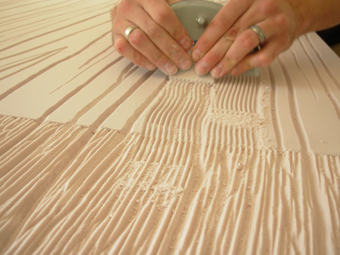In recent years, many sign shops have turned to the versatility and durability of HDU material to create dimensional signs. But there are still some misconceptions out there about this material, so Sign Builder Illustrated spoke to manufacturers and suppliers to carve out the details on how to best work with HDU.
It’s important to first determine what type of project you’re working on and to then choose the best density of HDU for it. Common HDU options include ten-, fifteen-, eighteen-, and thirty-pound density, with the most popular being fifteen-pound.
The density affects everything from the tools to the detail to the finishing. A rule of thumb is the lower the density, the softer the material (and the less detail that’s possible). Lower densities may also require more primer and paint on the finishing end.
It’s also importnat to realize that HDU may be similar to wood in many respects, but it’s not meant to be used for structural strength. Wood grain provides a lot of structural support or beam strength, which HDU does not have.
So if the material will be used for any type of support, a thicker density or an additional backing will be needed.
Beyond density, shops often ask what type of tools can be used on HDU. Chuck Miller, president of Coastal Enterprises, sums it up simply: “You use exactly the same tools—the Dremels and the cutters and everything—that you would use on wood. If it works on wood, it’s easier to use it on HDU. But if you can’t use it on wood, you can’t use it on HDU.”
Everything from hand tools such as chisels to machining tools like CNC routers and lathes can be used on HDU. It just comes down to personal preference.
(Note: Miller dispels a common myth by explaining that a hot wire cannot be used on HDU—the material doesn’t dissolve under the heat, so it will break the wire.)
Whether machining or hand carving HDU, it’s important to take your time. “It’s just thinking the process through,” says Daniel Hennesey, Sales & Customer Service at Wensco Sign Supplies. “No redos—and that’s a rule for any shop. They don’t like redos because it costs them money and time.”
Still even the most careful carvers can make mistakes. The good news is that there are ways to fix them.
There are a few options for repairing smaller mistakes or mis-cuts:
+ Use Coastal Enterprise’s FSC-360 WB HDU Filler.
+ Combine HDU dust with a quality woodworking glue and use it for filling holes.
+ Use a polyurethane glue, but remember that the densities of the glue and the HDU are not the same. “You will see a sheen difference between where the glue spot is and the sign foam itself. That’s why you need to prime it a number of times and sand in between,” says Hennesey.
For bigger mistakes where a piece has been broken or cut off, you can re-carve the section and glue it on. You can even program your router to cut out a plug using the same tool path that made the mistake.
When you finish cutting/carving, you’re not out of the woods just yet—the piece still needs to be finished. In many ways, this can be the trickiest part since finishing HDU is so different from other materials. HDU doesn’t absorb anything, so the primer and paint must dry from the inside out.
(Note: A variety of paints can be used on HDU, including latex, laquer, and polyurethane-based coatings.)
“To speed up the drying process, after you apply the primer, put a twenty-four-inch-diameter shop fan blowing across it,” says Miller. “The air that’s moving across the surface creates a frictional heating as the air slides along and barely changes the temperature, but enough to where the moisture or whatever solvents are in the paint realize that it’s warmer on the outside than it is on the inside and it jumps out. So it dries really fast.”
(Note: HDU will take the longest to dry in cold, damp conditions.)
The HDU sign must dry out completely or blisters will appear on the sign when it’s out in the sun.

Beware that a dry surface doesn’t always indicate a fully dry sign. To tell if the HDU is really dry, sign makers should sand a corner of the sign with 100-grit sandpaper. If any primer or paint streaks onto the sandpaper, the piece isn’t fully dry.
Whether finishing, cutting, or carving HDU, it’s important to do so safely. “First and foremost, you need to have a dust mask,” says Hennesey.
There’s nothing carcinogenic in the HDU dust, and no fumes/gases are given off when it’s cut, but it’s still important to avoid breathing in the dust.
Protective eyewear is a must, and Hennesey also recommends wearing textured gloves for a better grip when dealing with larger HDU pieces.
By Ashley Bray
Photos: Jeff Wisdom, Oregon SignWorks in Springfield, OR.











